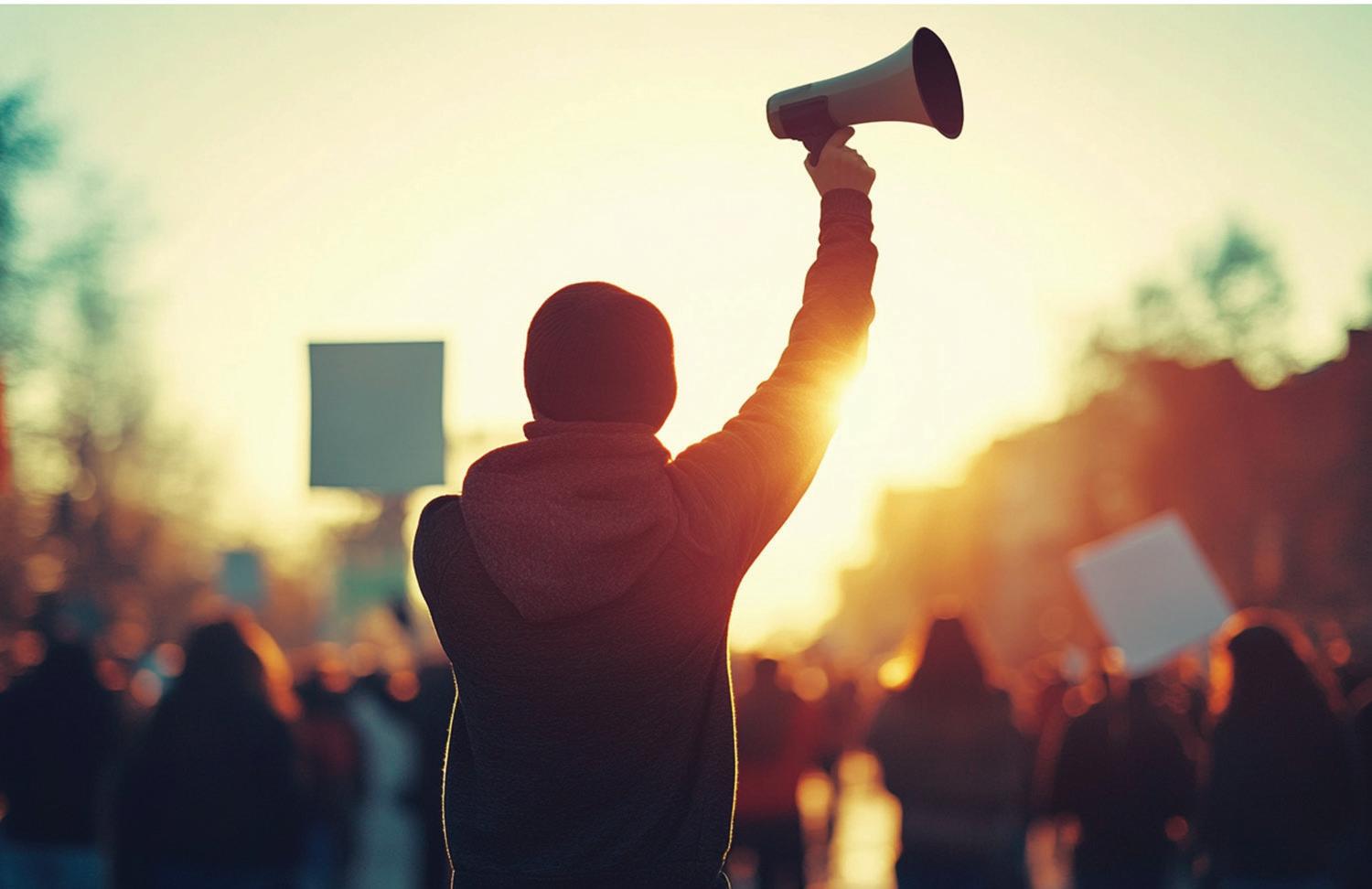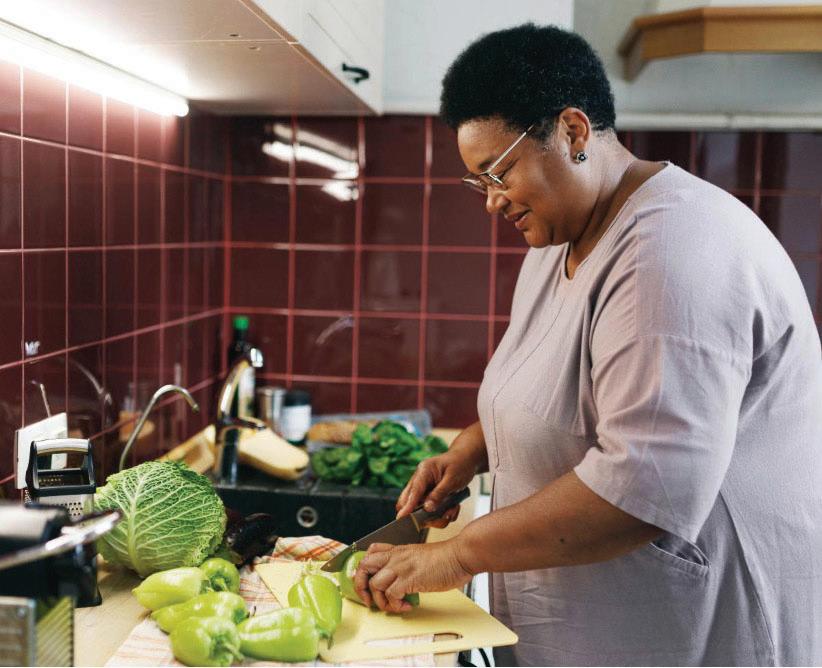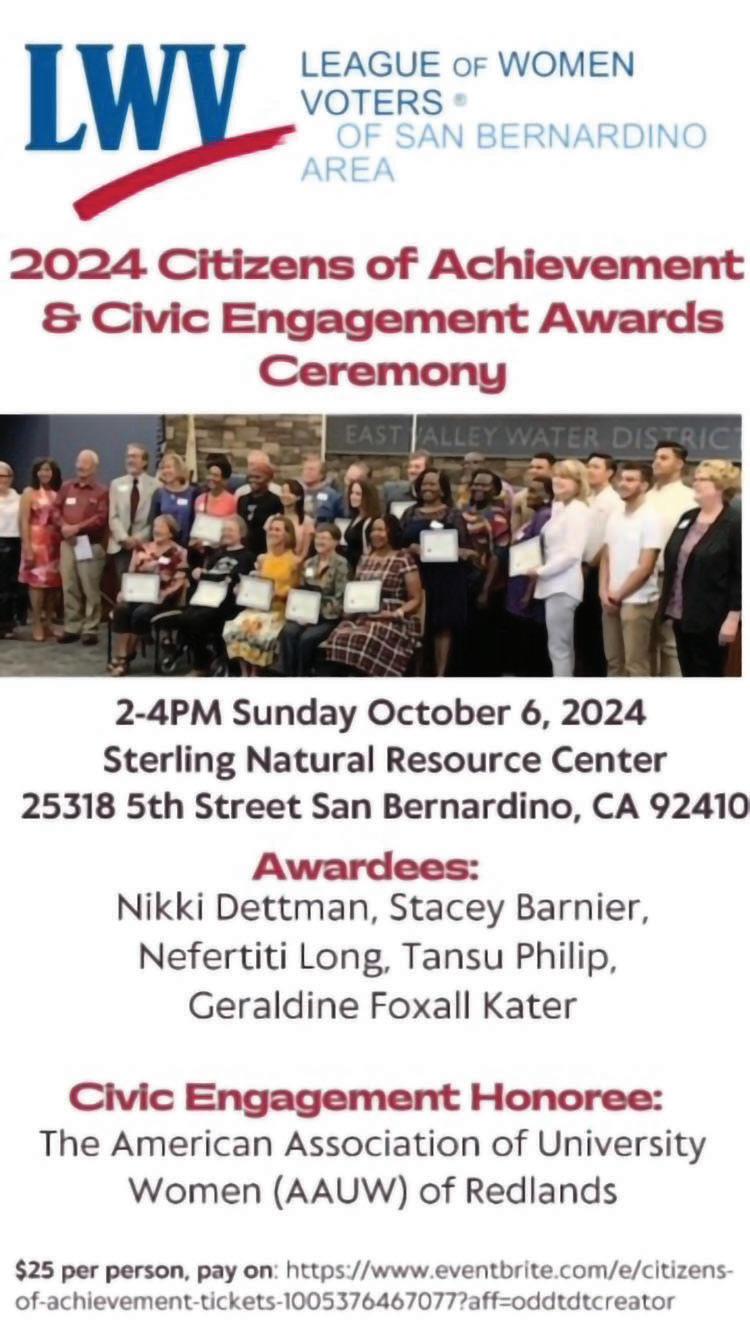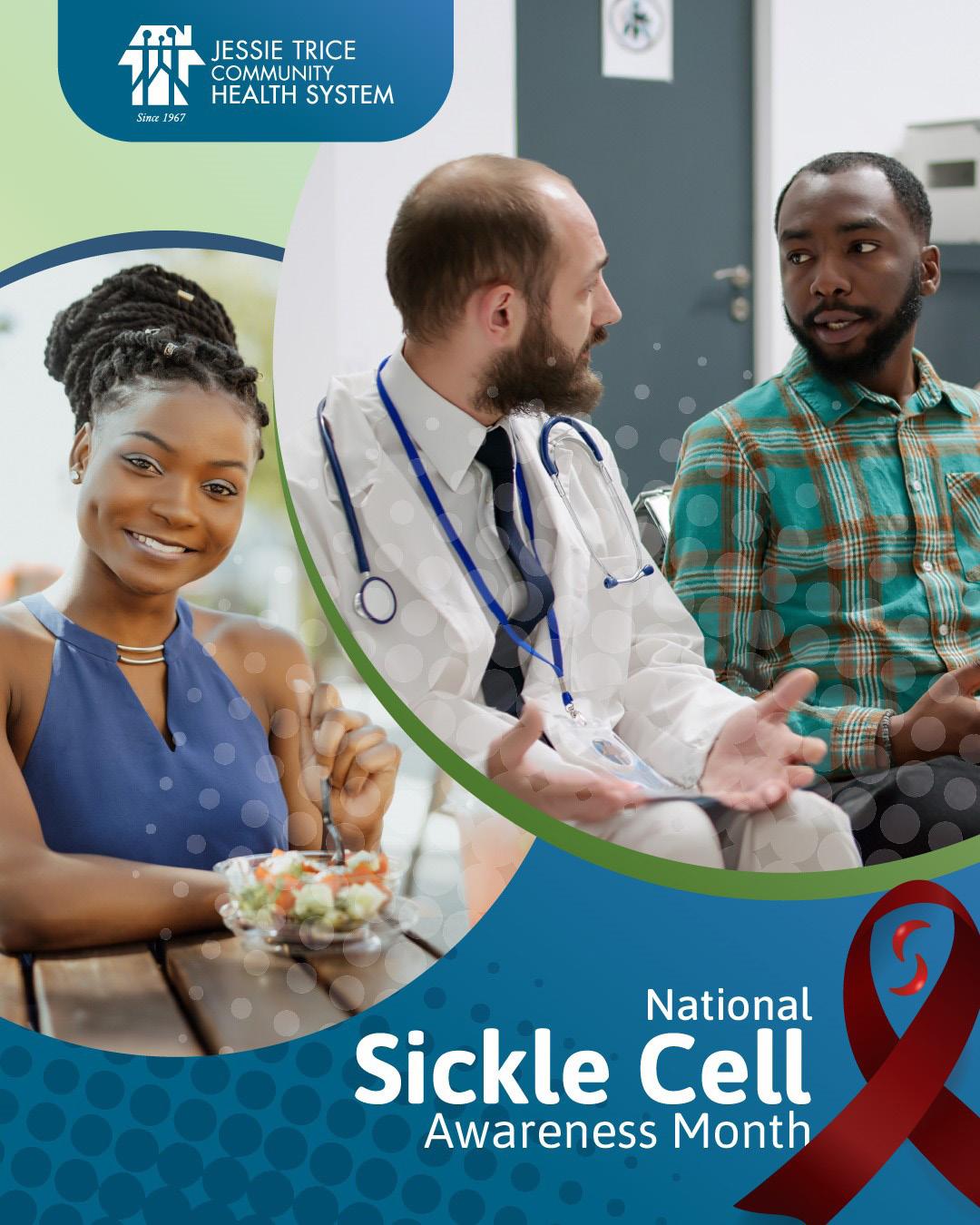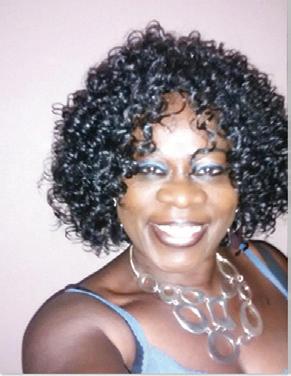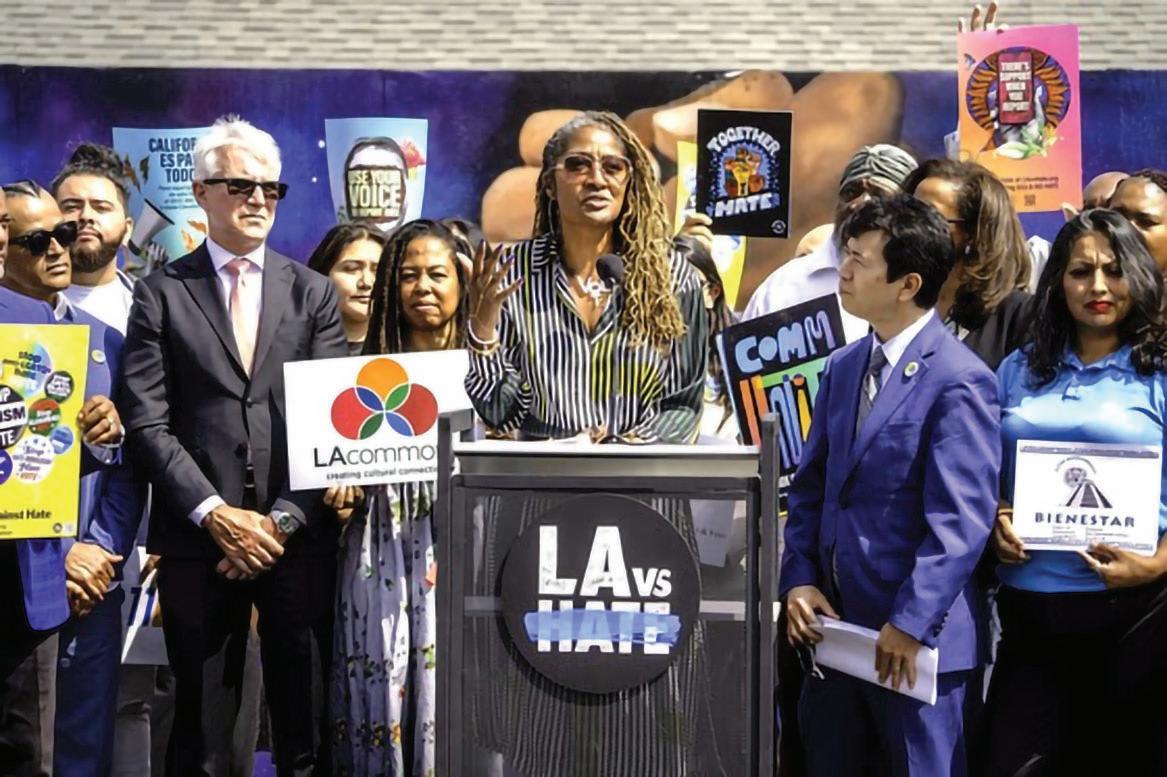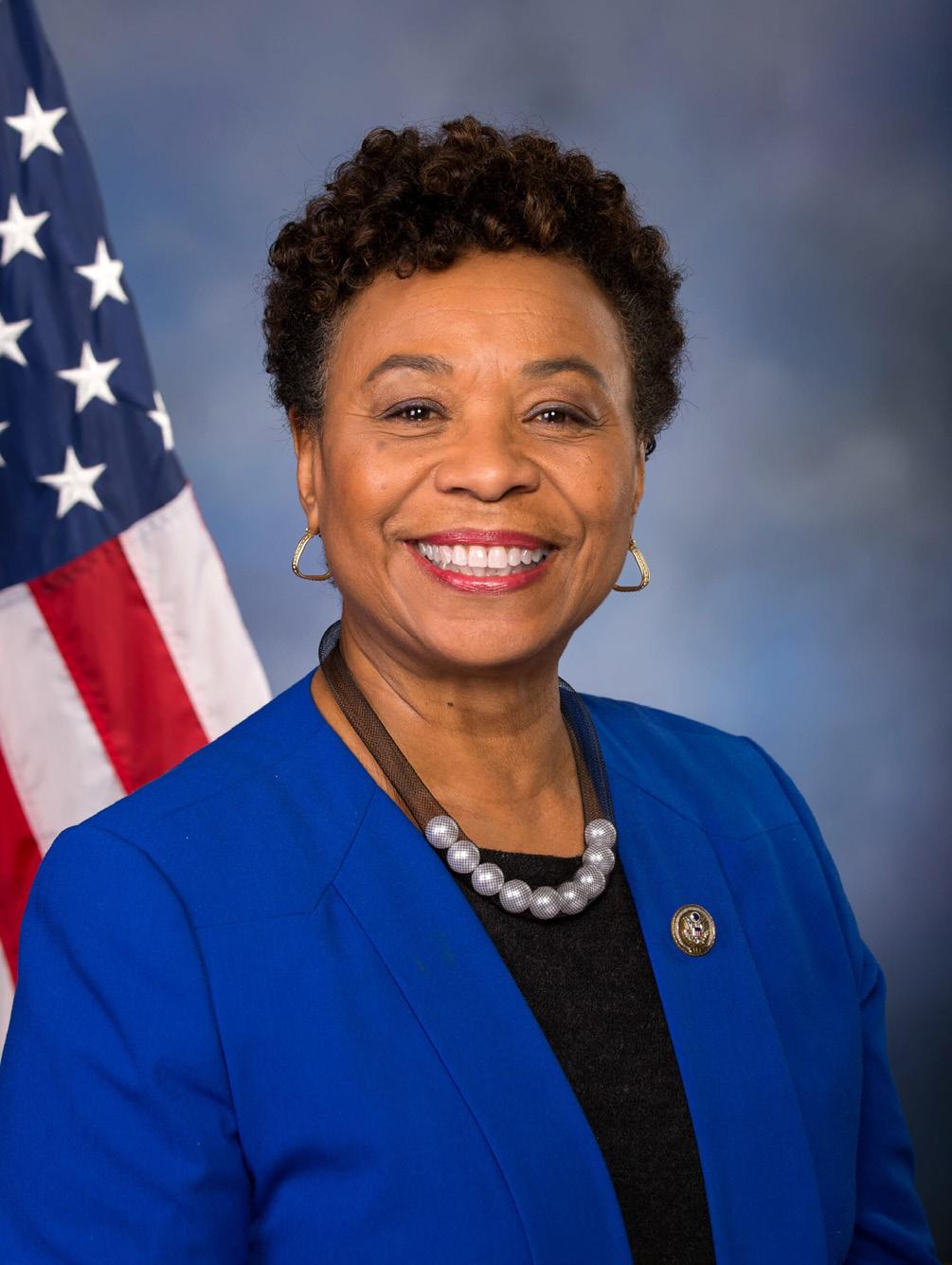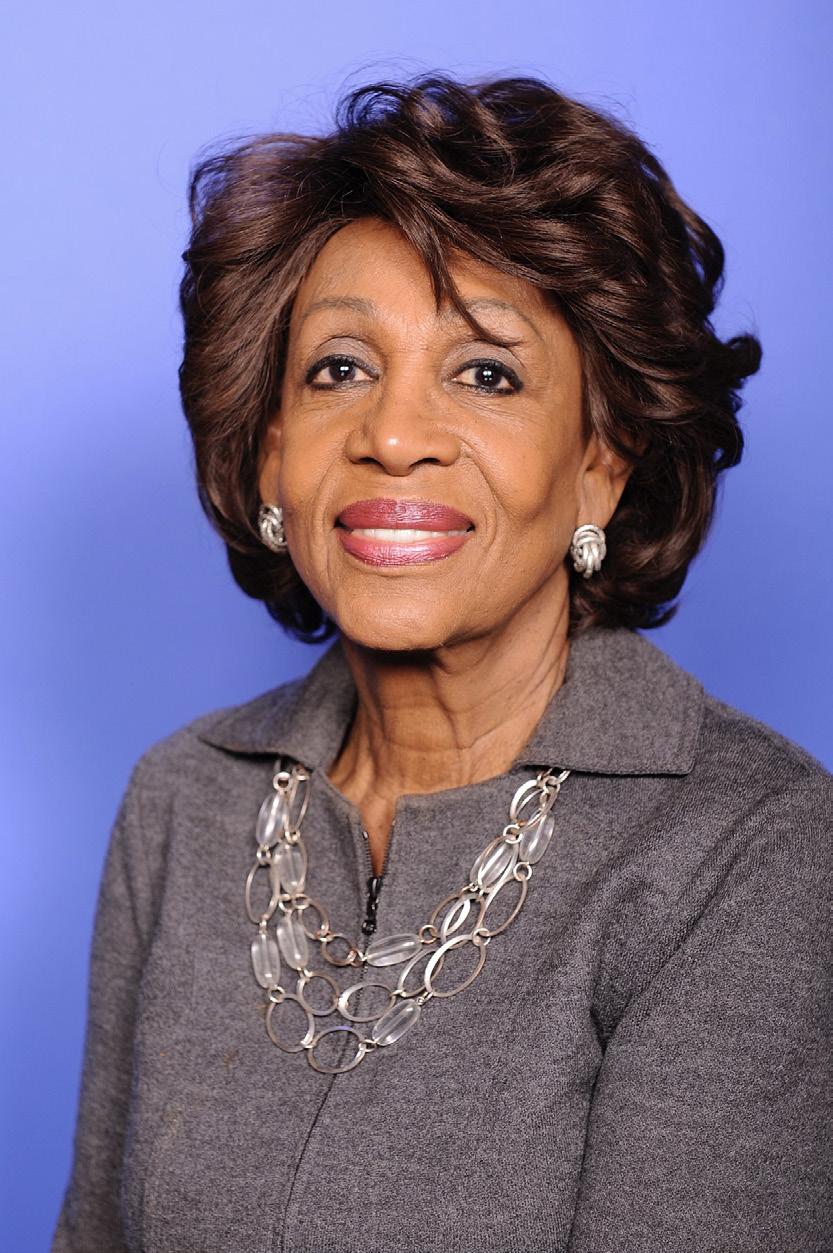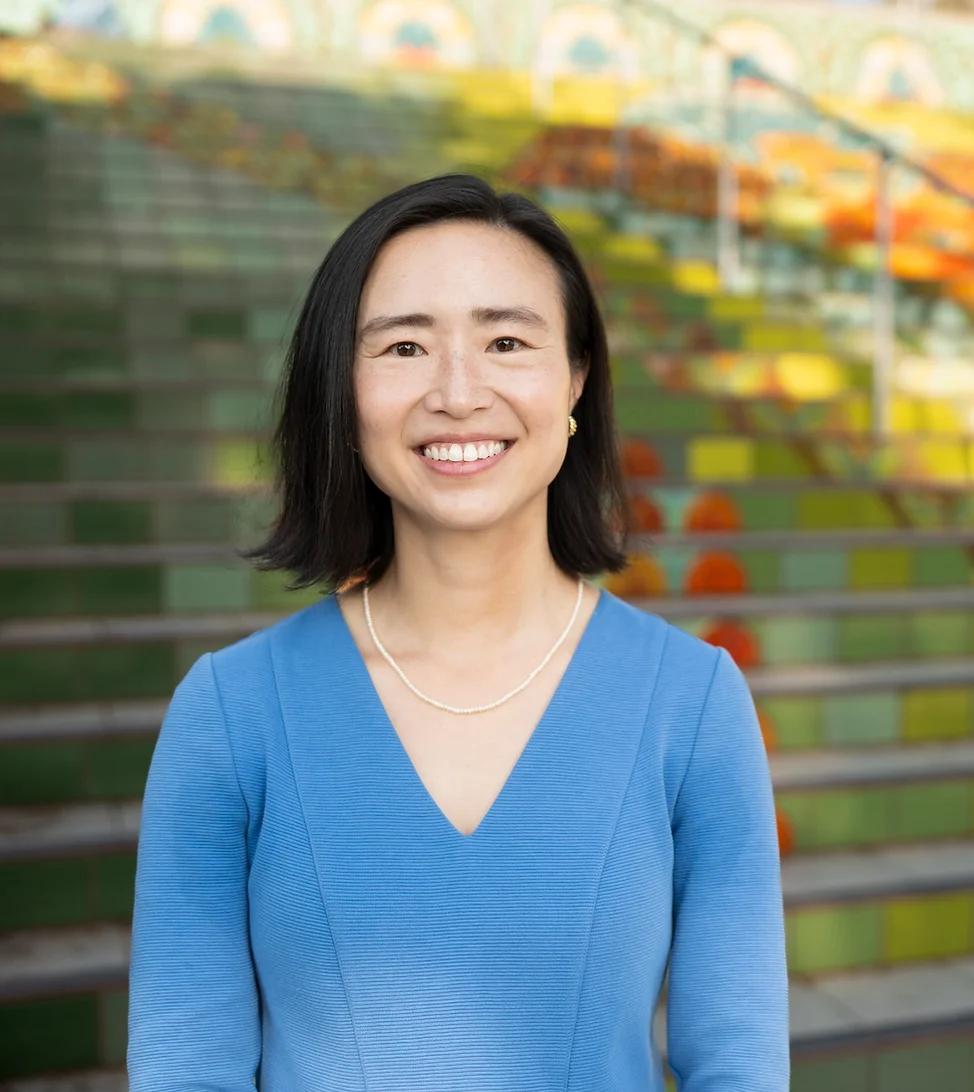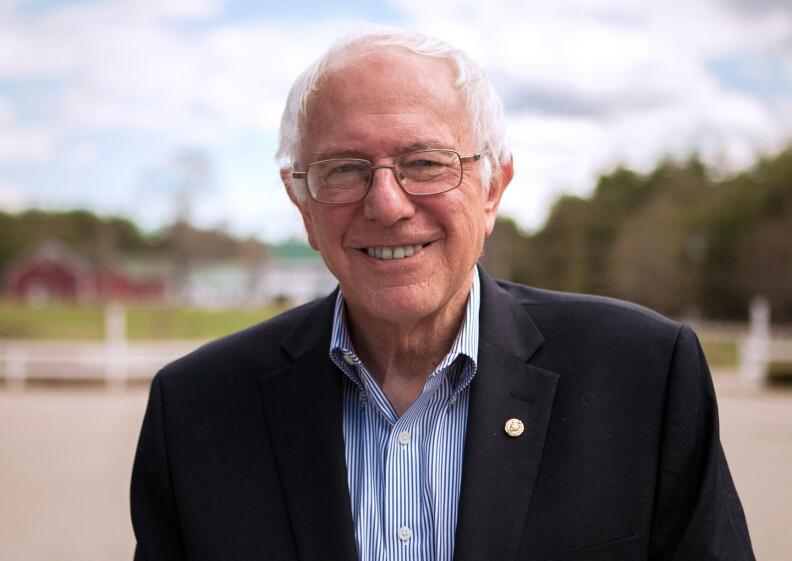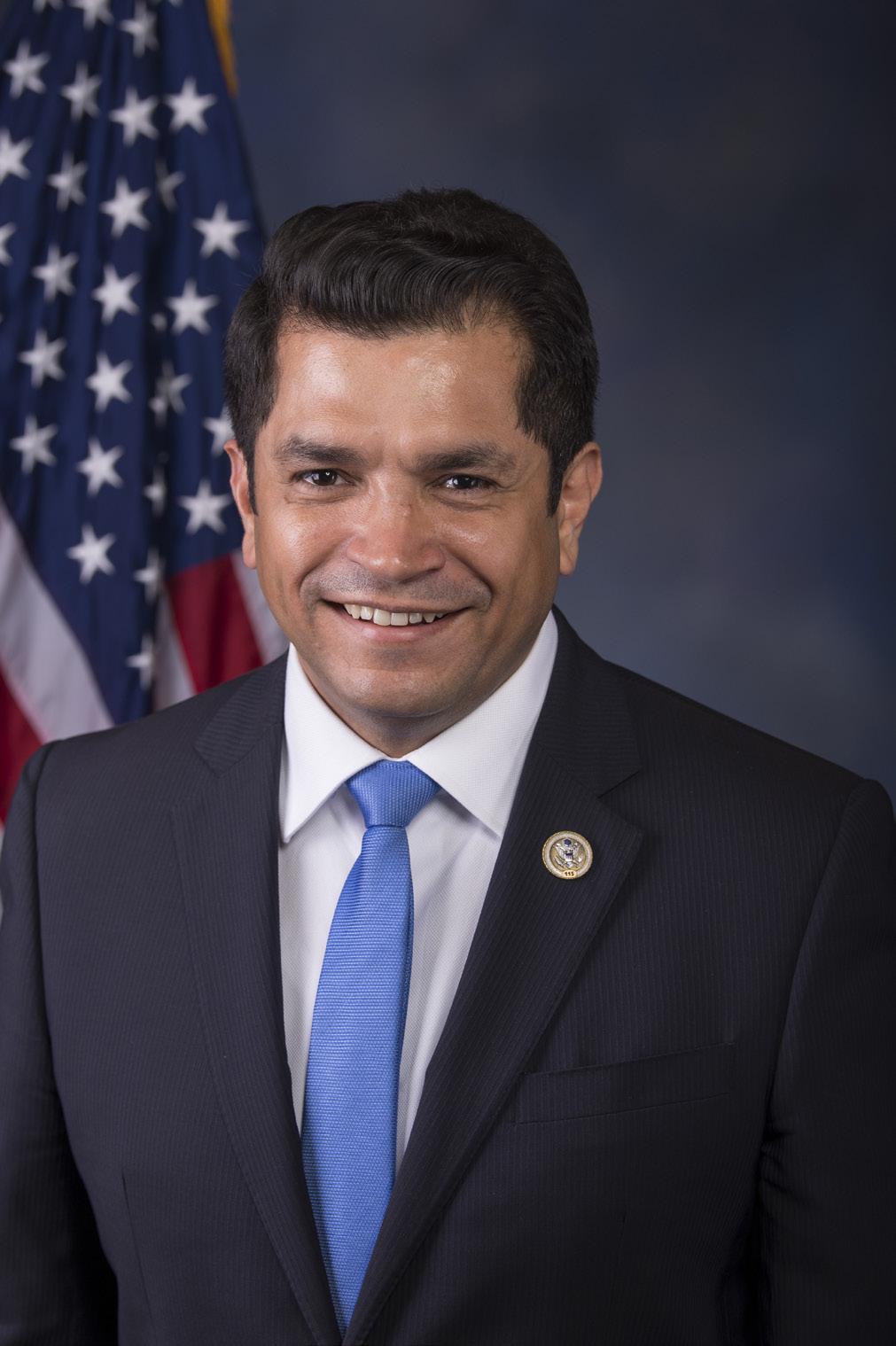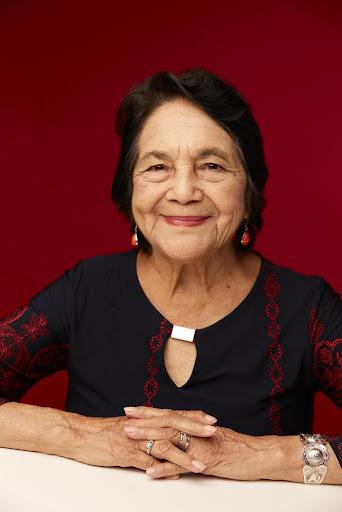Help Keep Your Brain Healthy With Foods We Eat Everyday
By Hazel Trice Edney
It can happen all too often.
Someone is talking and – right in the middle of a sentence –lose their train of thought, forget someone’s name or even a word they want to use. Whether it is called a senior moment, memory lapse or just plain forgetfulness, it can be quite embarrassing –and sometimes, even scary.
But just because someone experiences these moments, it may not mean they are developing a debilitating brain disease like a type of dementia for which there are yet no cures. Actually, according to medical experts, as people age, it is perfectly normal to experience changes in brain health and memory.
According to the Centers for Disease Control and Prevention (CDC) and other medical agencies, there are also ways to boost brain health; including choices of healthy foods.
A CDC article, “Healthy Diet. Healthy Brain,” reports “a healthy diet may reduce your risk for memory loss and confusion. A healthy diet can help to improve your overall health, including brain health.”
It lists certain types of foods as the very best to boost brain health: They include fruits, vegetables, whole grains, fatfree or low-fat milk and milk products, lean meats, poultry, fish, beans, eggs and nuts; also, foods low in saturated fats, trans fats, cholesterol, salt (sodium) and low in added sugars are best for a healthy brain.
More specifically, according to the Harvard Medical School, in an article, “Foods Linked to Better Brain Power,” research has revealed that “the best brain foods are the same ones that protect your heart and blood vessels,” including the following foods that we eat every day, but just need more: Green, leafy vegetables. Leafy greens such as kale, spinach, collards, and broccoli are rich in brain-healthy nutrients like
vitamin K, lutein, folate, and beta carotene. Research suggests these plant-based foods may help slow cognitive decline.
Fatty fish. Fatty fish are abundant sources of omega-3 fatty acids, healthy unsaturated fats that have been linked to lower blood levels of beta-amyloid— the protein that forms damaging clumps in the brains of people with Alzheimer's disease. Try to eat fish at least twice a week, but choose varieties that are low in mercury, such as salmon, cod, canned light tuna, and pollack.
If you're not a fan of fish, ask your doctor about taking an omega-3 supplement, or choose terrestrial omega-3 sources such as flaxseeds, avocados, and walnuts.
Berries. Flavonoids, the natural plant pigments that give berries their brilliant hues, also help improve memory, research shows. A study done by researchers at Harvard's Brigham and Women's Hospital found that women who consumed two or more servings of strawberries and blueberries each week delayed memory decline by up to two-and-a-half years.
Tea and coffee. The caffeine in your morning cup of coffee or tea might offer more than just a short-term concentration boost. In a study published in The Journal of Nutrition, participants with higher caffeine consumption
scored better on tests of mental function. Caffeine might also help solidify new memories, according to other research. Investigators at Johns Hopkins University asked participants to study a series of images and then take either a placebo or a 200-milligram caffeine tablet. More members of the caffeine group were able to correctly identify the images on the following day. Walnuts. Nuts are excellent sources of protein and healthy fats, and one type of nut in particular might also improve memory. A study from UCLA linked higher walnut consumption to improved cognitive test scores. Walnuts are high in a type of omega-3 fatty acid called alpha-linolenic acid (ALA). Diets rich in ALA and other omega-3 fatty acids have been linked to lower blood pressure and cleaner arteries. That's good for both the heart and brain.
Yes, so-called ‘senior moments’ can be scary, embarrassing; sometimes even comical, causing us to laugh at ourselves. But often times, through self-care, the goal of a healthier brain can be accomplished with foods that we eat every day. This article is part of a series powered by AARP for the purpose of brain health education. Here's more information.
LWVSB 2024 Citizens of Achievement & Civic Engagement Ceremony
Upcoming League of Women Voters, of San Bernardino Citizens of Achievement and Civic Engagement Event to honor local community leaders and an organization.
Citizens of Achievement Honorees include Stacey Barnier, Nikki Dettman, Geraldine "Gerri" Foxall-Kater, Nefertiti Long, and Tansu Phillip. Civic Engagement Honoree include The American Association of University Women (AAUW) of Redlands.
Date: Sunday, October 6, 2024 Time: 2:00 to 4:00 p.m.
Location: Sterling Natural Resource Center, 25318 5th StreetSan Bernardino, CA 92410 Cost: $25.00 per person or a table of 8 for $150.00
To register for the event or for information visit San Bernardino Area | MyLO (lwv.org)
Transforming Futures: The Economic Engine of HBCUs
On Your November Ballot: Prop 6 Could End “InvoluntaryServitude”
in California Prisons
Edward Henderson | California Black Media
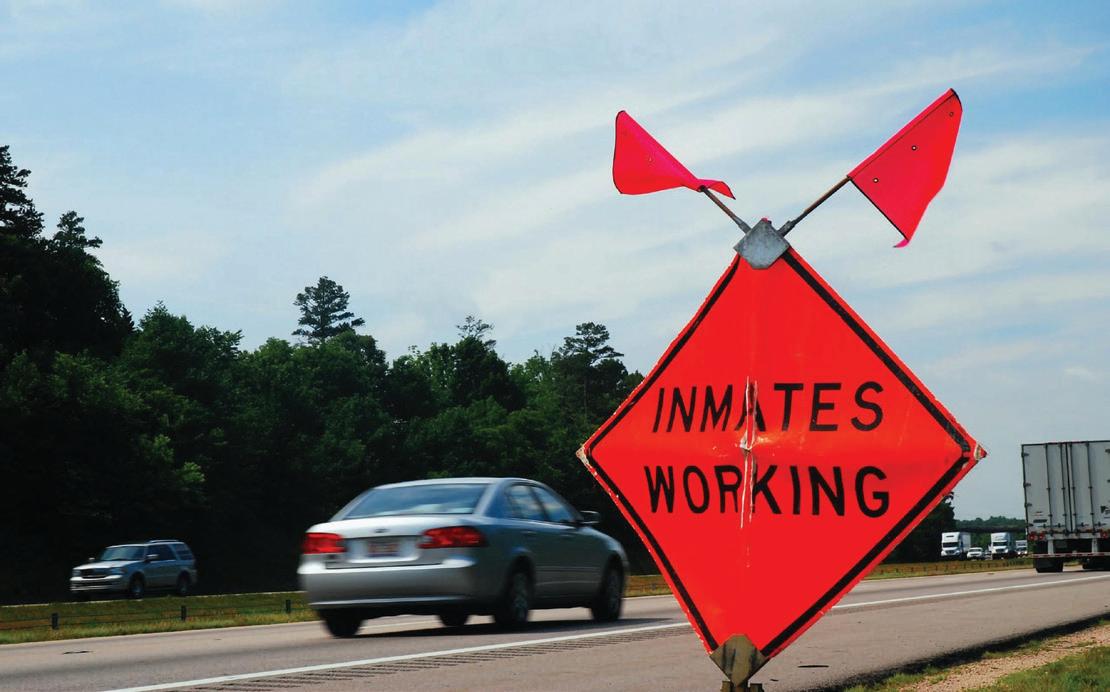
Proposition (Prop) 6 would repeal language in the CaliforniaConstitution that prohibits “involuntary servitude except to punishcrime.”Instead, it will replace it with language that prohibits slavery andinvoluntary servitude absolutely.The amendment would also prohibit the California Department ofCorrections and Rehabilitation from disciplining any incarcerated personfor refusing a work assignment and authorize the department to awardtime credits to incarcerated persons who voluntarily participate in workassignments.To gain a greater understanding of the proposition and the experience ofincarcerated individuals impacted by the current language, CaliforniaBlack Media spoke with Dr. Tanisha Cannon, Managing Director ofLegal Services for Prisoners with Children (LSPC).The LSPC organizes communities impacted by the criminal justicesystem and advocates to release incarcerated people, to restore humanand civil rights, and to reunify families and communities. They alsobuild public awareness of structural and systemic racism in policing, thecourts, and the prison system, and aim to advance racial and genderjustice in their work.“There are really two main messages for this to be a yes vote,” saidCannon. “The way that the Constitution names what's going on in theseprisons is called involuntary servitude. Involuntary servitude is justanother name for slavery. That means that there's a force and there'scoercion. People don't have autonomy over their bodies or theirdecisions: if they even want to work. So, the main message here is thatinvoluntary servitude is slavery.”
The LSPC also facilitates focus groups to gain understanding on howindividuals who have not been impacted by the prisonindustrialcomplex view the involuntary servitude currently utilized.“They're like, 'Oh, people are in prison; they do the crime; they shoulddo the time.' That has nothing to do with bodily autonomy. You shouldstill be able to make decisions -- if you want to work or an option maybeif you want to go to school instead or maybe if you want to take angermanagement classes instead you should have the choice to create whatyou believe is your rehabilitative process.”So far, eight states, including California, have made provisions in theirconstitutions permitting involuntary servitude, but not slavery, as acriminal
punishment. According to the National Conference of StateLegislatures, 34 states have “earned time” credits that are awarded forparticipating in or completing education, vocational training, treatment,and work programs. Time credits can later be applied towards earlyrelease from secure custody.The AntiRecidivism Coalition has also been on record supporting Prop6, stating that, “More than 94,000 Californians are currently enslaved instate prison. African Americans account for 28% of the prisonpopulation despite making up less than 6% of California's overallpopulation. Although no courts explicitly order forced labor as a part ofcriminal sentencing, it's standard practice to force incarcerated people toperform labor."Of those roughly 90,000 inmates, the state’s prison system employsnearly 40,000 who complete a variety of tasks including cleaning,cooking, firefighting, construction and yard work. Most of these workersearn less than 74 cents an hour, excluding the firefighters who can makeup to $10 a day. State law permits the corrections department to pay upto half of the current minimum wage in California ($16).
Eighty percent of the employees at LSPC have been directly impactedby the prison-industrial complex. Cannon’s brother works there as welland was in prison at the age of 16 experiencing first-hand how forcedlabor can negatively impact an individual’s psyche.“My grandmother passed away and he received that news in the evening.On the outside, you'd get some grieving time. That wasn't the case forhim,” said Cannon.“He had to wake up at five o'clock the next morning. So, imaginelearning that the woman who raised you just passed away. You're due forwork at 5 a.m. in the morning to operate heavy machinery and youcannot say that you don't want to work because there's no excusedabsence in prison.”So far, there hasn’t been any organized opposition to Prop 6 inCalifornia.A "yes" vote supports amending the state constitution to prohibit slaveryand involuntary servitude as punishment for a crime and authorize theDepartment of Corrections and Rehabilitation to award credits toincarcerated persons who voluntarily participate in work assignments.A “no” vote opposes amending the state constitution to prohibit slaveryand involuntary servitude as punishment for a crime.
REP Unveils Groundbreaking New Video: "Reparations: From Concept to Reality"
Government/Business News
Washington, DC – Sept 18, 2024: The Reparation Education Project (REP) is proud to announce the public unveiling of its powerful new video, "Reparations: From Concept to Reality," produced to elevate the discourse on reparations in the United States. This six-minute resource, scripted and narrated by veteran reparationist Attorney
COUNTY/GOVERNMENT/RELIGION
REP Unveils Groundbreaking New Video: "Reparations: From Concept to Reality"...continued
reparations as not only a moral imperative but as a viable policy solution, informing and motivating audiences to take action in support of reparations for Black people.
Nkechi Taifa commented, “Reparations are not an extremist or distant dream. They are an established practice in both U.S. and international law for those who have suffered gross human rights violations. This video is a tangible resource that will help move the reparations narrative forward, accelerating its acceptance within the mainstream.”
Leading voices in the movement have added their commentary, including Attorney Bryan Stevenson, Executive Director of the Equal Justice Initiative, who stated, “This is a compelling, critically important and informative presentation on why repairing our nation’s legacy of slavery is both necessary and achievable.”
Dr. Marcus Anthony Hunter, author of “Radical Reparations: Healing the Soul of a Nation,” added, "We cannot close the racial wealth gap without addressing the truth that stolen labor, land, and lives built this great nation. Reparations are the clearest path toward healing that breach.”
Makani Themba, long-time activist, affirmed, “Reparations are essential to addressing the profound harm caused by slavery,
On
Nkechi Taifa, Executive Director of the Reparation Education Project, explores the history and imperative for reparations, using the visually captivating timelapse animation process from the acclaimed artist Molly Crabapple and her production team. The video, described as both timely and impactful, presents
segregation, and anti-Black violence over the centuries. We will never have a just future in this country without confronting and healing our past. This video is a key resource for helping people understand why reparations are so important."
In addition to these voices, the Reparation Education Project's Artists and Athletes for Reparations campaign has gained support from figures in the entertainment industry. Actress Erika Alexander shared, “I’m proud to lend my voice to this powerful initiative. Reparations are not about handouts; they are about healing and correcting historic wrongs. They offer a way to repair the ongoing harm that Black communities experience daily.”
The video is available on YouTube and is a must-watch for anyone seeking to understand the importance of reparations as a mechanism for justice and equity.
About the Reparation Education Project
The Reparation Education Project supports the escalating movement for reparations as a key resource for those exploring historical and current analysis on reparations through education, information, storytelling, and mobilization.
For more information, visit www. ReparationEducationProject.org
Your November Ballot: Prop 5
Would Make It Easier for Local Gov’ts to Fund Housing, Infrastructure – With Risks
Edward Henderson | California Black Media
Credit: Shutterstock
Proposition 5 would amend the California constitution by lowering therequired voter approval threshold to 55% for local governments toborrow money to fund affordable housing construction, down paymentassistance programs, supportive housing and public infrastructureprojects. “Infrastructure,” according to the proposition’s language caninclude a broad range of development projects, including watermanagement, local hospitals, police stations, broadband networks, parksand other development projects. Under current law, it takes a supermajority of 66% of voters to approvethose housing and infrastructure bonds.If Prop 5 passes, the new approval threshold will apply not just to futurebonds, but any that are on the ballot this November. That includes aproposed $20 billion affordable housing bond in the San FranciscoBay area. Supporters of the proposition believe that lowering the voter approvalthreshold to 55% would make it easier for cities and towns to borrowmoney in support of critical projects like creating more affordablehousing to address the state’s ongoing housing shortage andhomelessness crisis, for example.California Black Media (CBM) reached out to the Western StatesRegional Joint Board Workers United, a labor union that supports a yesvote for Prop 6. They represent Industrial Laundry workers andStarbucks employees. They provided the following statement: “As a union that represents low wage workers in communities whereaffordable housing is virtually non-existent, we join the proponents ofProp 5 in supporting a more streamlined
On Your November Ballot: Prop 5 Would Make It Easier for Local Gov’ts to Fund Housing, Infrastructure – With Risks...continued
it isnecessary to make it even easier to increase property taxes with newbonds.”Opponents also believe that when it is easier to borrow money, someelected officials are likely to spend existing tax revenues on everythingexcept high-priority needs. They believe the higher threshold is a propercheck and balance to make sure funds only go to projects that areimperative.“Under the current system local governments still can approve bonds.They need two-thirds vote, which is a reasonable threshold because itmeans the community really has to come together and agree onsomething to get to that vote level. Bonds are approved all the timeunder the current threshold, so the current system is working. It doesn'tneed to be changed to make it easier to increase taxes now.”Supporters of Prop 5 include the California Professional Firefighters; theLeague of Women Voters of California; and Habitat for HumanityCalifornia. Some opponents are the California Taxpayers Association;The California Hispanic Chambers of Commerce; and the WomenVeterans Alliance.A "yes" vote supports lowering the vote threshold from 66.67% to 55%for local bond measures to fund housing projects and publicinfrastructure.A "no" vote opposes lowering the vote threshold from 66.67% to 55%for local bond measures to fund housing projects and publicinfrastructure.
Congressional Black Caucus releases corporate accountability report on diversity, equity, and inclusion
New report finds strong support among Fortune 500 companies for workforce diversity, equity, and inclusion despite ongoing attacks. Report outlines “best practices” guide to strengthen corporate diversity across sectors.
By Black PR Wire

solution to funding the buildingof more affordable housing by a majority threshold.”Jesse Arreguin, the mayor of Berkeley and vice president of theAssociation of Bay Area Governments is also on record saying: “AsCalifornians, it is our right to tell the government how it should spendour taxpayer funds. If a majority of people believe that generalobligation bonds should be issued for critical housing and infrastructureneeds, then it should not be blocked by a minority. People may notalways agree on everything, but our democratic system allows us todebate the best path forward and collectively implement the will of thepeople. Prop. 5 will give more control to the voters in how our money isspent, while making it easier to address some of the most critical issuesof our time."Opponents believe that decisions which put more debt on the stateshould be made via a board consensus. They warn, if Prop 5 passes,borrowing for local development projects will be paid with higher taxes. Critics also call the measure an attempt to undo the taxpayer protectionsthat California voters embedded into the state constitution with Prop 13.CBM spoke with David Kline, Vice President of Communications &Research for CalTax on why a no vote for prop 5 is the best option.“The bottom line is, we oppose it because it's going to increase the costof living in California,” said Kline. “We think the cost of living here isalready too high. By making it easier for local governments to approvemore bonds, that leads to property tax increases because that’s howbonds are repaid.That means it’s more expensive for people with their own homes,renters, because the taxes will get passed along to the renters for small businesses. It increases the cost of running a business because theproperty taxes will go up. So, just in general, we don't think
A new report by the Congressional Black Caucus finds strong support among Fortune 500 companies for workforce diversity, equity, and inclusion despite ongoing attacks. (Image courtesy Unsplash / Cytonn Photography)
(Black PR Wire) – Recently, Congressional Black Caucus Chairman Steven Horsford (NV-04) and members of the Congressional Black Caucus released its new corporate accountability report, “What Good Looks Like”: A Corporate Accountability Report on Diversity, Equity, and Inclusion – a first-of-its-kind report to hold Fortune 500 companies — across all sectors — accountable to their diversity, equity, and inclusion commitments and racial equity investments post-George Floyd.
The new report commissioned by the CBC finds that the majority of Fortune 500 companies that responded to a survey by the CBC remain committed to advancing diversity, equity, and inclusion in the workplace despite right wing attacks in the wake of the U.S. Supreme Court’s decision to overturn affirmative action in the landmark Students for Fair Admissions v. Harvard in June 2023. Since the ruling, diversity initiatives have come under attack in corporate America, on college campuses in nearly 30 states, and in federal programs and venture capital firms for Black and minority businesses, despite research from institutions such as the Black Economic Alliance Foundation, which proves that 78 percent of Americans agree that corporate America should reflect the racial diversity of the American population, and McKinsey & Company showing that companies with racially diverse executive teams outperform their peers in profitability by 39 percent.
The report analyzes corporate diversity practices based on data shared with the CBC aggregated by industry according to the Global Industry Classification Standard (GICS) and the North American Industry Classification System (NAICS). Of the Fortune 500 companies reflected in the GICS data, a majority have made progress to their commitments to workplace diversity and racial equity.
The report further outlines 12 Best Practices and innovative approaches (or “What Good Looks Like”), taken by companies across various industries to promote diversity, equity, and inclusion in their workplaces and beyond, which the CBC hopes corporations will use as a standardized tool to strengthen, magnify, and expand diversity, equity, and inclusion practices across industries
The report comes nearly 10 months after the CBC issued its corporate accountability letter in December 2023 in response to the ongoing attacks on diversity initiatives in the private sector. The letter urged corporate America, particularly those in the Fortune 500 who made public pledges to diversity and racial equity post-George Floyd, to stand firm in their commitments and to update congressional members on the progress of their commitments.
Congressional Black Caucus Chairman Steven Horsford offered the following quote:
“The CBC commends corporate leaders who have overwhelmingly reaffirmed their company’s commitment to advancing diversity, equity and inclusion in their business practices and operations, and those who believe, like most Americans, that diversity is a business and talent imperative. We cannot allow a handful of right-wing agitators to bully corporations, and this report offers corporate America a guide to strengthening their diversity practices. This report is the initial step in a strategic effort to ensure the tools of economic opportunity are protected as we work to advance our Black wealth and economic prosperity agenda in the next Congress to close the Black-white wealth gap in America.”
Jessie Trice Community Health System Observes Sickle Cell Awareness Month
(Black PR Wire) September is National Sickle Cell Awareness Month. In recognition of this observance, Jessie Trice Community Health System (JTCHS) joins the numerous health care providers and organizations across the country, bringing awareness to the disease and recognizing the resilience of patients living with sickle cell disease (SCD).
SCD is the most common inherited blood disorder in the United States. According to the Centers for Disease Control and Prevention (CDC), SCD occurs in about 1 out of every 365 Black or African American births and about 1 out of every 16,300 Hispanic American births.Most newborns who have SCD do not have symptoms until they are about 5 or 6 months old. “While sickle cell disease is a lifelong condition, there are steps that individuals can take to help reduce the risk of complications, like staying hydrated, avoiding extreme temperatures, washing their hands often to prevent infections and keeping up with regular medical checkups, ” said Dr. Joycelyn Lawrence,MD Chief Medical Officer of JTCHS. “At JTCHS, we remain committed to supporting families through comprehensive care, education and advocacy to improve the quality of life for those impacted by SCD”.
The Jessie Trice Community Health System, Inc. is one of Miami-Dade County’s preeminent federally qualified community health care centers, governed by a remarkably
dedicated Board of Directors (51% of which are users of the medical and dental services) and a diverse, incredibly talented, committed family of providers and staff. The 1st Federally Qualified Health Center in the state and 5th in the nation, Jessie Trice Community Health System, Inc., is a Florida 501 (c) 3, not-for-profit organization that has been serving Miami-Dade County since 1967. JTCHS served its first patients from a trailer. Now, more than fifty (50) years after its founding, JTCHS owns and operates eleven (11) Comprehensive Primary Care centers, a 40 bed Women’s Residential Center for substance use, and are located in two (2) universities and forty (40) school-based health suites. JTCHS knows and specializes in comprehensive health, offering a myriad of services to improve the health of the community. This includes: dentistry, family medicine, nutrition, HIV/AIDS, behavioral health, transportation, pharmacy, healthy start, obstetric & gynecological care, schoolbased health, community health promotions, health & wellness center, pediatrics, and ancillary services. For more information on the Jessie Trice Community Health System, call 305-6376400 or visit jtchs.org. In addition, to stay connected with news and information about their services and facilities, follow Jessie Trice Community Health System on Facebook, X, formerly Twitter and Instagram @JessieTriceCHS.
5 RSV Complications in Older Black Adults
While most adults only get mild symptoms when contracting the respiratory syncytial virus (RSV), the same can’t be said of older adults. According to the Centers for Disease Prevention and Control (CDC), adults over the age of 60 should be particularly concerned when they have RSV. In previous years, there have been hundreds of hospital admissions of persons over 75 per 100,000 and those who were in their 60s weren’t far behind. Black Americans, in particular, should be wary of contracting RSV as statistics show that they account for over 55 percent of all hospitalizations from the virus.
5 RSV Complications For Older Adults
1. Worse COVID Symptoms
If you already have COVID and then contract RSV or vice versa, the presence of the RSV usually makes the COVID symptoms worse.
Some studies also suggest
5 RSV Complications in Older Black Adults... continued
mucus. Pneumonia must be treated by your doctor.
4. Bronchiolitis
Sometimes RSV can cause bronchiolitis, which is the inflammation of the bronchioles in your lungs. The initial signs of this illness are fever, congestion, runny nose, loss of appetite, and a cough.
As your condition worsens, you may experience wheezing, shortness of breath, and a worsening cough. You’ll need medical intervention to treat it.
5. Worsening Congestive Heart Failure
People who are dealing with congestive heart failure may experience worsening symptoms if they contract RSV. You’ll need to look out for signs of heart trouble as well as issues from RSV. You should contact your doctor immediately if you have trouble breathing or have heart palpitations.
Signs You Need To Go To The Hospital
It’s common for adults to assume that they’ve caught a bad case of the cold or flu when they’re dealing with RSV. There are a few key differences to look out for, though. For example, the fever that’s associated with the flu often happens more quickly than the one with RSV.
More importantly, you need to know when it’s time to go to the hospital. Some signs that your RSV is getting worse include an increasing fever, shortness of breath, wheezing, a worsening cough, and a bluish tint to your skin or lips because of poor oxygen levels in your blood.
How RSV Is Treated
If your symptoms are
manageable, your doctor will likely recommend using overthe-counter medications until you feel better. However, once you need to go to the hospital, there are a few different treatment options available. You can’t cure RSV but there are supportive treatments that help ease your symptoms and prevent complications.
Some options include IV fluids to keep you hydrated, Oxygen to ensure that your blood remains oxygenated, ventilators to help you breathe, decongestants, and immunoglobulin if you have a weak immune system.
Tips For Preventing RSV Infections
One thing you can do to avoid contracting RSV is to stay away from people who are sick - whether or not they’ve been diagnosed with the illness. If you think that you have touched someone who’s sick or they have been in your home, you need to wash your hands and disinfect all the surfaces in the house. It’s also a good idea to avoid touching your face regularly as this is one of the ways that germs get introduced into your system.
Additionally, RSV vaccines are now available for adults over the age of 60 as well as others who may be more susceptible to the virus. You should talk to your doctor as soon as possible to find out if they’re right for you.
It’s typical for many Americans to contract RSV during the fall. Most of them won’t experience bad symptoms but older adults are more likely to have complications. This appears to be especially true for Black people. While it’s best not to get the illness in the first place, it’s just as important to know how to manage the symptoms if you have it.
"Unity in CommUNITY Day"
Save the date Saturday September 28th is the first weekend of Fall and what better way to start Fall then with family and friends at the 8th annual Chill N Grillin barbecue comPITition in Fontana, at the North Fontana Park Jessie Turner Sports Pavilion 15556 Summit Avenue,
that having COVID can make you more susceptible to certain viruses. Since both of these illnesses can significantly affect your breathing, it’s worth talking to your doctor about the steps to keep you safe.
2. Worsening Asthma Or COPD
People who have chronic respiratory conditions like asthma and COPD are likely to have their symptoms worsen when they contract RSV.
In these cases, your regular maintenance treatments or emergency inhalers may not work as well. You should talk to your doctor as soon as you start feeling ill in case you need a different treatment while you’re sick.
3. Pneumonia
Your illness can develop into pneumonia if your RSV symptoms get out of control.
Some signs that you have pneumonia are a high fever that leads to shaking or chills, a loss of appetite, shortness of breath, shallow breathing, sharp chest pain, and a cough that produces green, yellowish, or bloody
11:00 a.m. to 3:00 p.m. Enjoy barbecue chicken and ribs for the price of admission. Enjoy family friendly live entertainment, KidZone, vendors, car show and resource information regarding prostate cancer, September is prostate cancer awareness month.
Riverside County Hosts Out of Darkness Walks to Raise Awareness for Suicide Prevention
RIVERSIDE, CA (Sept. 17, 2024) – The public is invited to participate in two upcoming Out of Darkness Community Walks in Riverside and the Coachella Valley to spotlight suicide prevention and mental health awareness.
The walks are sponsored by Riverside University Health System (RUHS) and the Riverside County Suicide Prevention Coalition, in partnership with the American Foundation for Suicide Prevention (AFSP).
The two events are scheduled for 9 a.m. on Sept. 28 at Fairmount Park located at 2601 Fairmount Blvd. in Riverside and at 9 a.m. on Oct. 19 at Civic Center Park located at 43900 San Pablo Ave. in Palm Desert.
“Each life matters, and in Riverside County, we are committed to doing everything in our power to prevent the tragedy of suicide. The Out of Darkness Walks are a powerful reminder that we stand united in this mission,” said Fourth District Supervisor V. Manuel Perez.
Held annually in Riverside County, the events gather the community in remembrance and awareness. Participants connect, share stories and
Riverside County Hosts Out of Darkness Walks to Raise Awareness for Suicide Prevention ...continued
“At RUHS, our mission goes beyond treating symptoms; it’s about fostering hope, resilience, and connection,” said Dr. Matthew Chang, RUHS Behavioral Health Director.
“We have seen the impact that informed, compassionate care can have and are dedicated to extending our reach even further.”
The Riverside County Suicide Prevention Coalition, formed by the Board of Supervisors in 2020, is an alliance of Riverside County and community organizations and agencies dedicated to reducing suicide rates through community outreach and education.
The Coalition offers suicide prevention and mental health awareness trainings, including safeTALK, ASIST (Applied Suicide Intervention Skills
Training) and Mental Health First Aid, which equip individuals to recognize and respond to signs of suicidal behavior. The Coalition also hosts a conference for the public each October.
Community members are invited to join the Suicide Prevention Coalition team at the Out of Darkness Community Walk or create their own teams by registering online. For those unable to attend the walks, there are options to donate or raise funds through the team’s page. All contributions are 100 percent tax-deductible and aid AFSP’s goal of reducing the suicide rate by 20 percent by 2025. Visit https://www.ruhealth. org/events/out-of-darknesswalks-24 for more information or to register or donate.
Deadline To Submit Press Releases & Legals Is Mondays By 5pm
“A Future Time So Horrendous…”
By Lou K. Coleman
Lou K. Coleman
That no human lives would be spared “UNLESS” those days were shortened. [Matthew 24:22]. I ask you; Should we take God seriously? Absolutely Yes! Because God is not a man that He should lie; neither the son of man that He should repent; hath He said, and shall He not do it? Or hath He spoken, and shall He not make it good? [Numbers 23:19].
O Jerusalem, Jerusalem, you who kill the prophets and stone those sent to you [ Matthew 23:37-39]. Do you see all these things? I tell you the truth, not one stone here will be left on another; everyone will be thrown down [Matthew 24:1-2]. The whole earth is about to be visited with Judgment and Destruction [Isaiah 24-27; Isaiah 34]. A period marked by unparalleled suffering and distress, unlike anything seen before or after. [Matthew 24:21; Zephaniah 1:15].
strengthen a culture of mental health awareness and suicide prevention.
Participants will honor those lost to suicide through memorial activities and take part in interactive booths and resources that offer education and support.
“Riverside County has made significant strides in suicide prevention, achieving a 16 percent decrease in suicide rates from 2019 to 2022. However, each life lost is a tragedy, and continued efforts are essential to support those at risk,” said First District Supervisor Kevin Jeffries.
RUHS has been at the forefront of this mission, engaging more than 10,000 residents in suicide prevention and mental health awareness, including training approximately 1,500 individuals in the past fiscal year alone.
The disciples were speechless. They sat for a while in silence, and then they asked Him three specific questions. When will these things take place, what will be the signs of His coming, and what will be the signs of the end of the age. [Matthew 24:3]. Jesus replied, it is not for you to know the times or epochs which the Father has fixed by His own authority [Acts 1:7].
I tell you; there are many biblical warnings that leave us in no doubt that increasingly cataclysmic events will occur. So, watch and repent and pray always that you may be counted worthy to escape all these things that will come to pass, and to stand before the Son of Man [Luke 21:36]. Even Paul warned Timothy, “After I am gone, things are going to get worse before they get better. So, buckle up. Terrible times are coming. Pay attention to this. Don’t be naïve and think everything is going to be okay [Romans 1:18-32]. A future time so horrendous is on the horizon [Ezekiel 5:17]. Don’t wait until it’s too late. Repent and get under the Umbrella of the Almighty God NOW!
In the Book of Daniel, Belshazzar saw the writing on the wall. Judgment had been declared. It was too late.
That night Babylon fell, and Belshazzar was slain. The Bible records his trembling, his fear, his knees smote together in terror. He found no place of repentance, he found no mercy, he found no grace. I tell you, these are the end times, the time of great tribulation, when God will pour out his wrath and judgment on an unbelieving world. Repent and get under the Umbrella of the Almighty God NOW because once the door of opportunity closes, it will be too late. God’s wrath and judgment is coming to this world. I have told you these things before they happen, so that when they do, you will remember that I told you about them [John 14:29; John 16:4].
Unfortunately, the people didn’t respond. They didn’t care. They continued to live their lives the way they pleased. They ignored God. God tells Ezekiel that He is about to cut off the food supply in Jerusalem and only give the people rationed water. He tells Ezekiel the people will waste away because of their sin. They were to be scattered to the wind. Nations would hate them. The wild beasts will be against them. And plagues and bloodshed were coming. Bones were going to be scattered, towns laid waste, and the high places of idolatry were going to be demolished.
Be careful that you do not refuse to listen when God speaks. Your ancestors didn't escape when they refused to listen to God, who warned them on earth. We certainly won't escape if we turn away from God, who warns us from heaven [Hebrews 12:25; Ezekiel 5:11].
I will choose their punishments and will bring on them what they dread. Because I called, but no one answered, I spoke, but they did not listen. And they did evil in My sight and chose that in which I did not delight” [Isaiah 66:4].
The final period of catastrophic events, climaxing in Christ’s return to earth, shows God punishing a wayward world that has refused to heed the warnings He has set.
Listen, a noise on the mountains, like that of a great multitude! An uproar among the kingdoms, like nations massing together! The Lord Almighty is mustering an army for war to destroy the whole country. Wail, for the day of the Lord is near; it will come like destruction from the Almighty [Isaiah 13].
Riverside County News
LA vs Hate, CA Civil Rights Department, Local Government Leaders and Community Partners Rally for Unity, Peace, Inclusion and Launch Seventh Annual “United Against Hate Week”
Amidst
a Divisive Election
Season, Coalition Addresses Urgent Need
LOS ANGELES – LA vs
Hate, the county’s anti-hate program, hosted the launch of United Against Hate Week in Los Angeles, welcoming LA County Supervisor Holly J. Mitchell and LA County District Attorney George Gascón, as well as coalition partners Not in Our Town, CA vs Hate, and Stop the Hate for their annual press conference. Partners, activists, organizations, schools, and communities joined the coalition to rally together and spread messages of hope and vigilance in the fight against hate.
United Against Hate Week (UAHW) is a call for local civic action to stop hate, discrimination, and implicit biases that negatively impact our diverse communities, neighborhoods, and cities. While the week has historically taken place in November, this year, UAHW organizers moved the campaign up to September in recognition of the UN International Day of Peace. This week of action supports communities across the country which have historically confronted the rise of hate and divisive rhetoric connected to elections.
“United Against Hate Week is a powerful reminder that everyone can do something to stand up to hate, and it starts with making a daily commitment to not allowing or perpetuating racism, homophobia, antisemitism, islamophobia, anti-Asian, antiBlack, or any form of hate that only serves to divide us,” said Los Angeles County Supervisor Holly J. Mitchell. “Our work to end hate is a shared responsibility that we must take seriously. I encourage all residents to participate in their local United Against Hate Week events and visit LAvsHate.org to learn how to join LA County in standing up to hate every day.”
LA vs Hate is honored to stand with this coalition to launch United Against Hate Week, especially needed during this highly charged election season,” said Los Angeles County Human Relations Commission Executive Director Robin Toma. “In response to the divisive rhetoric and tensions across communities, LA vs Hate is launching a new campaign called “Stop Hate. Vote.” We hope this non-partisan campaign will remind LA County residents to vote their values, and how their vote - and interact with others - could have an impact on the rise in hate acts. We urge people to think before they vote, then vote, and to practice civility and mutual respect towards everyone.”
“In a county as diverse as Los Angeles, my office is extremely proud of our partnership with this important community coalition to take strong action against hate crimes, and to encourage
acceptance and understanding among Angelenos,” said LA County District Attorney George Gascón. “Our office prosecutes more hate crimes than any other county in California, seeking justice for victims and ensuring that those who harm others are held accountable. In addition to vigorous prosecutions, our office’s groundbreaking antibias programs are making breakthroughs by addressing the root causes of hate through education, mental health support, and victim reconciliation. We share LA vs Hate’s goal of preventing hate crimes and reducing recidivism. These initiatives represent a bold commitment to dismantling prejudice and fostering inclusivity.”
“We’re proud to join with partners up and down California to take a stand against hate,” said California Civil Rights Department Director Kevin Kish. “Together, we’re sending a clear message that there is no place for bias and discrimination in our state. Whether you report to CA vs Hate, local law enforcement, or community leaders and programs you trust, we’re working to help ensure there is no wrong door to get support. United Against Hate Week is a time for all of us to get involved in the fight against hate. Join us! And remember: You can always report and get support by calling 833-8-NO-HATE or visiting CAvsHate.org.”
“United Against Hate Week was founded by city leaders in Northern California in response to white supremacists marching in the streets of our towns after Charlottesville. How can we all do something in the face of this threat? City leaders began with a poster campaign, followed by a call for a week of action each year to encourage all residents to find a way to stand up to hate together,” said leader of Not In Our Town and co-founder of United Against Hate week Patrice O’Neill. “This week of civic action has spread to over 200 communities and schools across the U.S,” O’Neill continued. “ We are honored to partner with leaders and communities including LA vs Hate, CA vs Hate, and Stop the Hate to encourage everyone to report hate crimes and incidents so our communities can respond together.”
“I am proud to see the ‘whole of government’ standing united against hate,” said Executive Director of the City of LA’s Civil Rights Department Capri Maddox. “During our LA for All week starting on September 27th, the LA City family, alongside our many partners, will light up the skyline for three days in our #LAForAll colors, celebrating the vibrant diversity of Los Angeles.”
LA vs Hate, CA Civil Rights Department, Local Government Leaders and Community Partners Rally for Unity, Peace, Inclusion and Launch Seventh Annual “United Against Hate Week”...continued
“The Stop the Hate program is a vital tool in tackling the rising tide of hate in California,” said AAPI Equity Alliance Program Director and California’s Stop the Hate Network’s Kiran Bhalla. “It puts statewide strength behind local, trusted, community-based resources, to support victims of hate and their families, and works through multi-racial coalitions to prevent hate in the long-run. Hate won’t fade away in the next year or two - It’s critical that we continue to put resources into the anti-hate fight.”
Recent statistics underscore the alarming trend of hate incidents in California. Statewide, reported hate crimes have nearly doubled from 1,015 in 2019 to 1,970 in 2023. Following two years of double-digit increases, reported hate crimes in Los Angeles County grew 18% from 790 to 929, the second largest number in more than 20 years. These figures, compounded with the reality that hate crimes and incidents are typically underreported nationwide, underscore the urgent need to take action to protect and support targeted communities.
This coalition is one of many government agencies, community organizations, and nonprofits that have been working to address and stymie the rise of hate on a national, state and local level. Launched by the LA County Commission on Human Relations in 2019, LA vs Hate is a community-centered program designed to encourage all residents of Los Angeles County to unite against and report hate, as well as to support those of us who may have been victims of hate-motivated acts. The program provides a free, confidential and anonymous hotline for victims and witnesses to report any hate incident or hate crime via online reporting to LAvsHate.org or by calling 2-1-1 in LA County, in turn receiving free follow-up services and supportive resources. By creating a specialized network of multicultural community organizations, LA vs Hate established a unique program that provides culturally-competent and identity-affirming services to those targeted for hate. Launched in 2023, the state’s anti-hate hotline and resource network California vs Hate builds off the successful model of LA County’s program providing support to residents across all of California.
Since its launch in September 2019, LA vs Hate has received more than 2,700 reports of hate, over 800 during the last year alone. Approximately 88% of those callers have requested personal assistance though case management, demonstrating the critical need for hate victim support.
At the press conference, Frankie Aguirre, a survivor of hate, spoke about years of antigay harassment by neighbors, explaining that the harassment was so bad that he didn’t want to invite family or friends to visit. It was only after calling 211 and connecting to the LA vs Hate system and resources, his care coordinator worked with Aguirre about getting help to move to another place. Once he did, he finally felt safe and became free from the constant demeaning harassment he endured for so long. In his remarks, Aguirre urged others facing hate to turn to LAvsHate.org/211 for help. The press conference was hosted at the “Unity Under the Sun” mural, a 200-foot installation facing the Watts Historic Train Station. This mural was presented by LA vs Hate in partnership with nonprofit Build Plus Community Marketplace and Watts Century Latino Organization. The mural, created in collaboration by two local Los Angeles artists, Misteralek and Showzart, spans the walls surrounding the train station and conveys a message of diversity, love, and honoring the cultural
history of the Watts community. This event was one of many events planned during LA County’s fifth celebration of United Against Hate Week. Now through September 27, local communities will host webinars, events, screenings, art projects, community dialogues, and meditation gatherings to provide a dynamic way to increase engagement across neighborhoods and support efforts to stand up to hate in our communities. UAHW emerged from a United Against Hate poster campaign created by Bay Area cities in response to white supremacist rallies in Berkeley and San Francisco in 2017 and was established as an annual event by Not in Our Town, a national anti-hate organization. Now in its seventh year, 200+ communities across the country have joined UAHW and committed to an annual week of action and awareness.
For a list of events taking place across the country, visit the United Against Hate Week 2024 Event Calendar. For more information and to report acts of hate and discrimination, visit LAvsHate.org or call 2-1-1.
Buys T.D.s and Buys/Lends on Partial Interests
UNCF Unveils 2024 HBCU Economic Impact Report Highlighting the Unmatched Contributions and Urgent Funding Needs of HBCUs...continued from page 2
On average, for each job created on campus, 1.5 offcampus jobs exist because of spending related to the institution.
HBCUs are far more accessible to students and more successful at moving students from the bottom 40% of a country’s income distribution to the top 60%, signaling social mobility.
The 51,269 HBCU graduates in the class of 2021 can expect work-life earnings of $146 billion, 57% ($53 billion) more than the $93 billion they could expect without their degrees or certificates.
The 2024 HBCU Economic Impact Report is a continuation of the landmark 2017 study, HBCUs Make America Strong: The Positive Economic Impact of Historically Black Colleges and Universities, which showed that HBCUs’ economic benefits extend beyond the students they educate. In addition to the comprehensive report, a website has been launched where users can explore state-specific data and insights for individual HCBUs. This resource allows users to explore the localized impact, emphasizing the critical role HBCUs play in communities across the nation.
“Transforming Futures: The Economic Engines of HBCUs represents the latest chapter in a longitudinal research initiative by UNCF’s Frederick D. Patterson Research Institute. By leveraging robust methodology and extensive data, we highlight how HBCUs continue to be critical drivers of economic growth and social mobility,” said Dr. Nadrea R. Njoku, assistant vice president, of Frederick D. Patterson Research Institute, UNCF.
“This report not only underscores the substantial economic benefits generated by HBCUs but also contextualizes the broader challenges they have faced over the past three years, including the far-reaching
impacts of the COVID-19 pandemic and the threats of violence that have been levied against many of these institutions.”
“Now more than ever, we must recognize the indispensable role HBCUs play in shaping not just the future of their students but the future of our nation. This report is not just a call to awareness but a call to action,” said Lodriguez Murray, senior vice president, of public policy and government affairs, at UNCF. “As we move forward, it is imperative that we leverage this data to galvanize our communities and demand the necessary support from our policymakers by voting for HBCUs. We urge every supporter to make their voices heard, to advocate for the equitable funding our HBCUs deserve, and to ensure that these institutions can continue to thrive and contribute to America’s future.”
UNCF will soon shift its focus towards voter mobilization efforts, leveraging the findings of the 2024 HBCU Economic Impact Report to raise awareness about the critical role of HBCUs ahead of Election Day, and the need for elected officials to commit to strengthening HBCU infrastructure, safety, and student life. By highlighting the economic and social contributions of these institutions, UNCF aims to inspire voters to support policies and send letters to elected leaders at the state and federal level in support of equitable funding and resources for HBCUs, ensuring their continued impact on communities and the nation.
To view the brief and full report for Transforming Futures: The Economic Engines of HBCUs, visit: UNCF.org/ HBCUImpactReport.
For more information on how to actualize a commitment and be a voice for HBCUs, visit: UNCF. org/EquityPledge.
C L A S S I F I E D S G O H E R E
Frankie Aguirre, a victim of hate (second from left), LA District Attorney George Gascón (fourth from left), Supervisor Holly J. Mitchell, Second District (center), and Robin Toma, Executive Director LA County’s Commission on Human Relations (first on the right), attended the launch of “United Against Hate Week” at the Historic Watts Train Station in Los Angeles on Friday, September 20.


